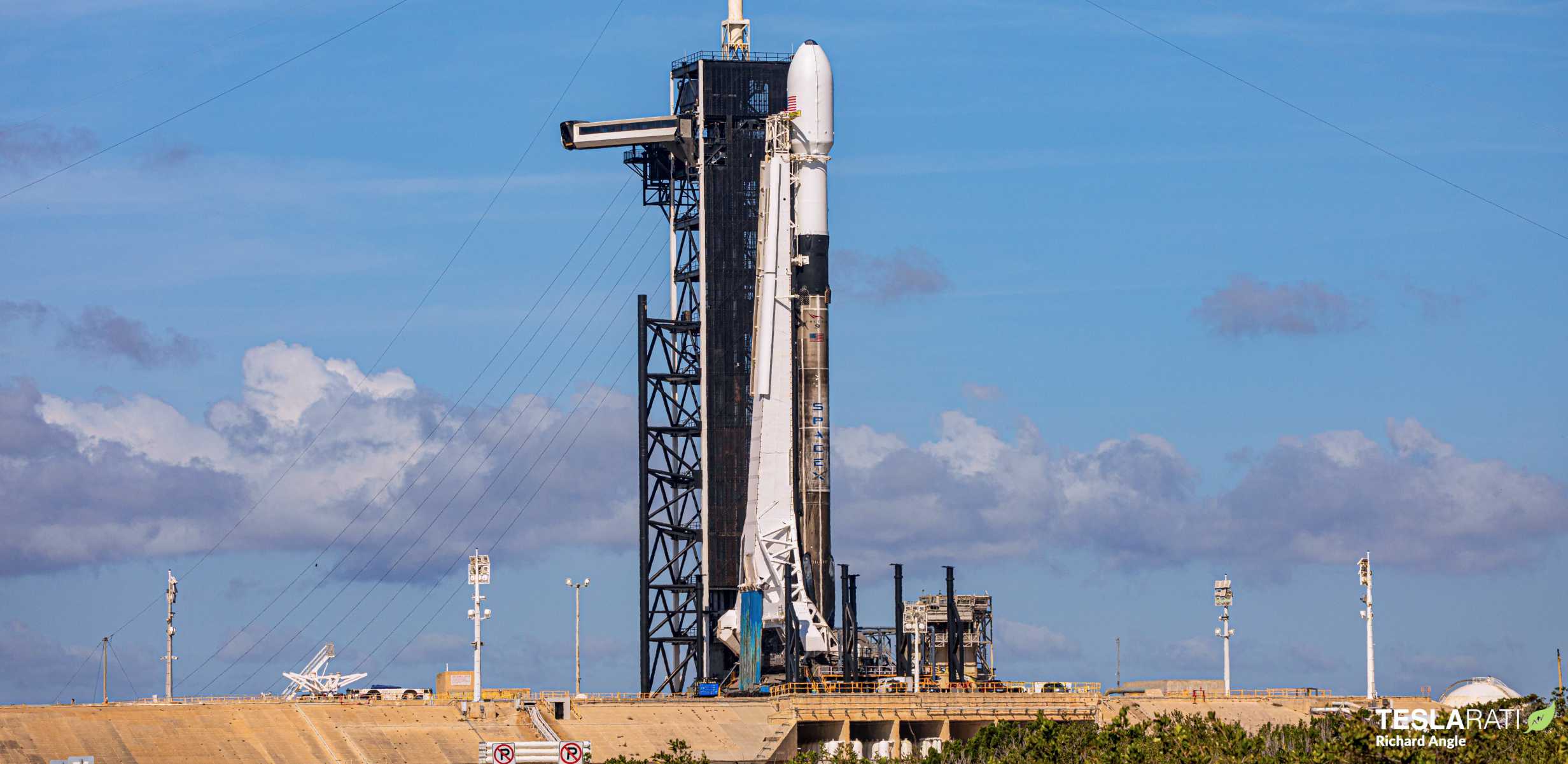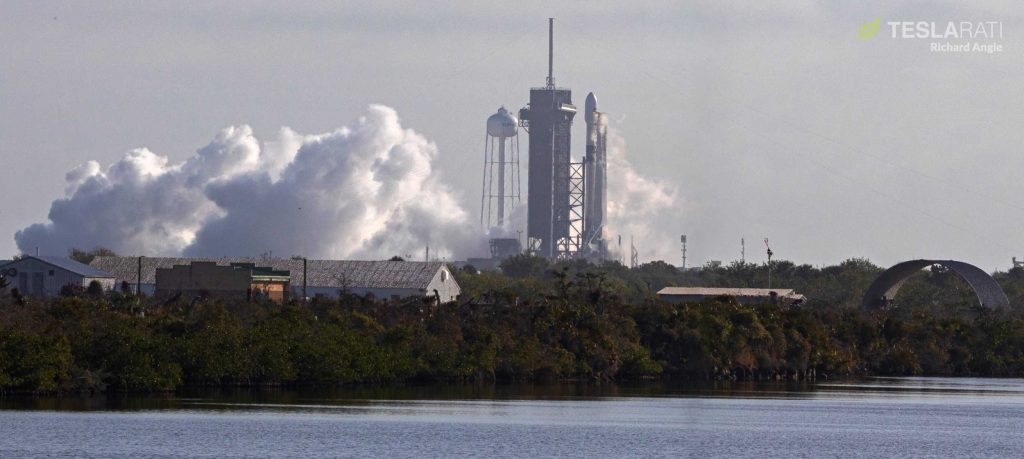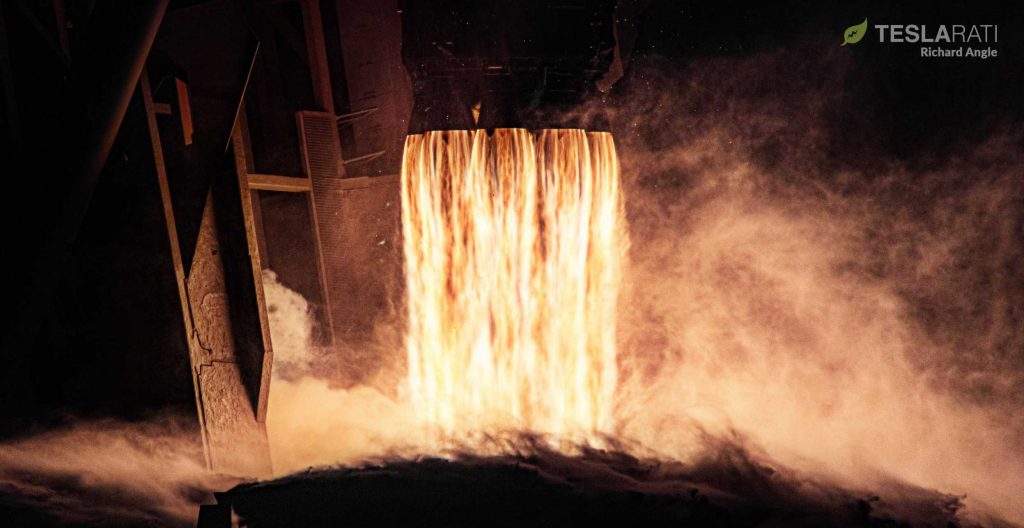

News
SpaceX rocket performs first last-second launch abort in years, delaying Starlink mission
A Falcon 9 rocket has performed SpaceX’s first last-second launch abort in years, shutting down the booster’s main engines and preventing liftoff just milliseconds after ignition.
Scheduled to lift off at 9:22 am EDT (13:22 UTC) on March 15th, SpaceX will now wait until no earlier than (NET) 8:21 am EDT (12:21 UTC) on Wednesday, March 18th for the sixth 60-satellite Starlink mission’s next launch attempt. Featuring an exceptionally flight-proven Falcon 9 booster and marking the second time ever SpaceX has reused a payload fairing, yesterday’s launch abort is also unique in its own right.
Notably, shortly after the launch countdown froze and Falcon 9 shut down at T-00:00:00, a launch operator – on-console either in Florida or at SpaceX’s Hawthorne, CA headquarters – revealed that the rocket had triggered a “launch abort on engine high power”. To explain that decision, a little background on how SpaceX launches its rockets and what exactly abort conditions are is necessary.
Software has always been a central part of SpaceX’s launch vehicles, treated more like a first-class citizen in design and engineering instead of the reluctant necessity other launch providers have frequently relegated it to. For anyone that’s watched numerous SpaceX launch webcasts, some might recognize the familiar “vehicle is in startup” callout that made around T-1 minute to liftoff. Standard on most modern launch vehicles, SpaceX’s Falcon rockets use onboard computers to take over their countdowns shortly before launch.
This is mainly done to allow the vehicle to simultaneously analyze thousands of channels of telemetry far faster and more reliably than humans ever could. During today’s launch attempt, that meant that Falcon 9 saw something it didn’t like just milliseconds before it was scheduled to command the release of the pad’s hold-down clamps and lift off.

Per one of SpaceX’s on-console engineers, the specific issue Falcon 9’s computer flagged was an “engine high power” alert. Soon after, SpaceX provided an update on Twitter, stating that the abort was “triggered due to out-of-family data during [an] engine power check” – putting the blame more on the sensors and software used to determine engine thrust than the engine hardware itself. An actual hardware or software failure that caused one or several booster engines to exceed their design limits could have potentially damaged B1048’s Merlin 1Ds, likely requiring weeks of repairs or a full swap with a different booster.
Given that Falcon 9 B1048 has already performed four orbital-class launches, hardware issues would not come as a major shock, but the successful static fire test it completed on Saturday made that far less likely. SpaceX’s confirmation that it was looking at an “out-of-family” reading thankfully means that only one of several thrust sensors showed the Falcon 9 booster producing too much thrust.

With any luck, post-ignition launch aborts will continue to be extremely rare for SpaceX’s Falcon launch vehicle family. The last such abort occurred in February 2016, more than four years and several booster ‘Block’ iterations ago.
Starlink L6 (V1 L5) is now scheduled to launch on Wednesday, March 18th, giving SpaceX workers some 72 hours to inspect Falcon 9 B1048’s engines, replace thrust sensors, tweak software, and prepare for a second launch attempt. Drone ship Of Course I Still Love You (OCISLY), fairing recovery ships GO Ms. Tree and GO Ms. Chief, and another support vessel or two remain on station in the Atlantic Ocean and will have to wait a bit longer for their next rocket recovery attempts.
Check out Teslarati’s Marketplace! We offer Tesla accessories, including for the Tesla Cybertruck and Tesla Model 3.
News
Tesla begins Robotaxi certification push in Arizona: report
Tesla seems serious about expanding its Robotaxi service to several states in the coming months.

Tesla has initiated discussions with Arizona transportation regulators to certify its driverless Robotaxi service in the state, as per a recent report from Bloomberg News. The move follows Tesla’s launch of its Robotaxi pilot program in Austin, Texas, as well as CEO Elon Musk’s recent comments about the service’s expansion in the Bay Area.
The Arizona Department of Transportation confirmed to Bloomberg that Tesla has reached out to begin the certification process for autonomous ride-sharing operations in the state. While details remain limited, the outreach suggests that Tesla is serious about expanding its driverless Robotaxi service to several territories in the coming months.
The Arizona development comes as Tesla prepares to expand its service area in Austin this weekend, as per CEO Elon Musk in a post on X. Musk also stated that Tesla is targeting the San Francisco Bay Area as its next major market, with a potential launch “in a month or two,” pending regulatory approvals.
Tesla first launched its autonomous ride-hailing program on June 22 in Austin with a small fleet of Model Y vehicles, accompanied by a Tesla employee in the passenger seat to monitor safety. While still classified as a test, Musk has said the program will expand to about 1,000 vehicles in the coming months. Tesla will later upgrade its Robotaxi fleet with the Cyercab, a two-seater that is designed without a steering wheel.
Sightings of Cybercab castings around the Giga Texas complex suggests that Tesla may be ramping the initial trial production of the self-driving two-seater. Tesla, for its part, has noted in the past that volume production of the Cybercab is expected to start sometime next year.
In California, Tesla has already applied for a transportation charter-party carrier permit from the state’s Public Utilities Commission. The company is reportedly taking a phased approach to operating in California, with the Robotaxi service starting with pre-arranged rides for employees in vehicles with safety drivers.
News
Tesla sets November 6 date for 2025 Annual Shareholder Meeting
The automaker announced the date on Thursday in a Form 8-K.

Tesla has scheduled its 2025 annual shareholder meeting for November 6, addressing investor concerns that the company was nearing a legal deadline to hold the event.
The automaker announced the date on Thursday in a Form 8-K submitted to the United States Securities and Exchange Commission (SEC). The company also listed a new proposal submission deadline of July 31 for items to be included in the proxy statement.
Tesla’s announcement followed calls from a group of 27 shareholders, including the leaders of large public pension funds, which urged Tesla’s board to formally set the meeting date, as noted in a report from The Wall Street Journal.
The group noted that under Texas law, where Tesla is now incorporated, companies must hold annual meetings within 13 months of the last one if requested by shareholders. Tesla’s previous annual shareholder meeting was held on June 13, 2024, which placed the July 13 deadline in focus.
Tesla originally stated in its 2024 annual report that it would file its proxy statement by the end of April. However, an amended filing on April 30 indicated that the Board of Directors had not yet finalized a meeting date, at least at the time.
The April filing also confirmed that Tesla’s board had formed a special committee to evaluate certain matters related to CEO Elon Musk’s compensation plan. Musk’s CEO performance award remains at the center of a lengthy legal dispute in Delaware, Tesla’s former state of incorporation.
Due to the aftermath of Musk’s legal dispute about his compensation plan in Delaware, he has not been paid for his work at Tesla for several years. Musk, for his part, has noted that he is more concerned about his voting stake in Tesla than his actual salary.
At last year’s annual meeting, TSLA shareholders voted to reapprove Elon Musk’s compensation plan and ratified Tesla’s decision to relocate its legal domicile from Delaware to Texas.
Elon Musk
Grok coming to Tesla vehicles next week “at the latest:” Elon Musk
Grok’s rollout to Tesla vehicles is expected to begin next week at the latest.

Elon Musk announced on Thursday that Grok, the large language model developed by his startup xAI, will soon be available in Tesla vehicles. Grok’s rollout to Tesla vehicles is expected to begin next week at the latest, further deepening the ties between the two Elon Musk-led companies.
Tesla–xAI synergy
Musk confirmed the news on X shortly after livestreaming the release of Grok 4, xAI’s latest large language model. “Grok is coming to Tesla vehicles very soon. Next week at the latest,” Musk wrote in a post on social media platform X.
During the livestream, Musk and several members of the xAI team highlighted several upgrades to Grok 4’s voice capabilities and performance metrics, positioning the LLM as competitive with top-tier models from OpenAI and Google.
The in-vehicle integration of Grok marks a new chapter in Tesla’s AI development. While Tesla has long relied on in-house systems for autonomous driving and energy optimization, Grok’s integration would introduce conversational AI directly into its vehicles’ user experience. This integration could potentially improve customer interaction inside Tesla vehicles.
xAI and Tesla’s collaborative footprint
Grok’s upcoming rollout to Tesla vehicles adds to a growing business relationship between Tesla and xAI. Earlier this year, Tesla disclosed that it generated $198.3 million in revenue from commercial, consulting, and support agreements with xAI, as noted in a report from Bloomberg News. A large portion of that amount, however, came from the sale of Megapack energy storage systems to the artificial intelligence startup.
In July 2023, Musk polled X users about whether Tesla should invest $5 billion in xAI. While no formal investment has been made so far, 68% of poll participants voted yes, and Musk has since stated that the idea would be discussed with Tesla’s board.
-

 Elon Musk1 week ago
Elon Musk1 week agoTesla investors will be shocked by Jim Cramer’s latest assessment
-

 Elon Musk3 days ago
Elon Musk3 days agoElon Musk confirms Grok 4 launch on July 9 with livestream event
-

 Elon Musk14 hours ago
Elon Musk14 hours agoxAI launches Grok 4 with new $300/month SuperGrok Heavy subscription
-

 News7 days ago
News7 days agoTesla Model 3 ranks as the safest new car in Europe for 2025, per Euro NCAP tests
-

 Elon Musk2 weeks ago
Elon Musk2 weeks agoA Tesla just delivered itself to a customer autonomously, Elon Musk confirms
-

 Elon Musk1 week ago
Elon Musk1 week agoxAI’s Memphis data center receives air permit despite community criticism
-

 Elon Musk2 weeks ago
Elon Musk2 weeks agoTesla’s Omead Afshar, known as Elon Musk’s right-hand man, leaves company: reports
-

 News2 weeks ago
News2 weeks agoXiaomi CEO congratulates Tesla on first FSD delivery: “We have to continue learning!”

















